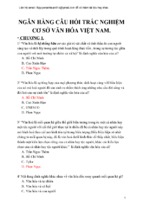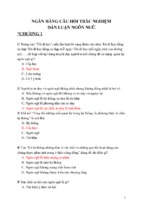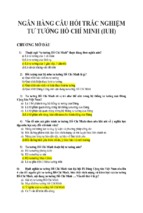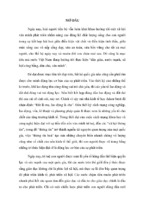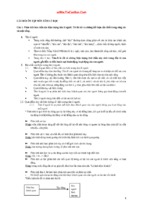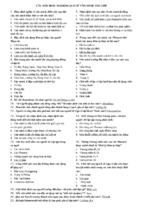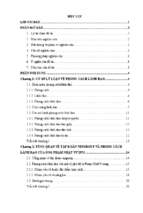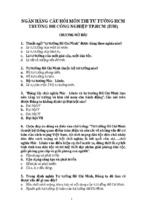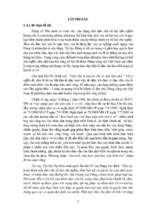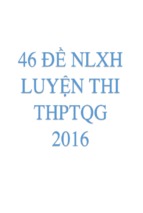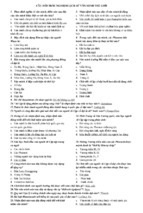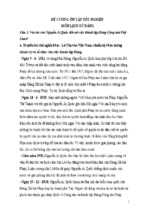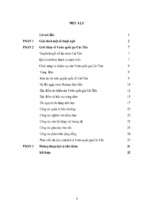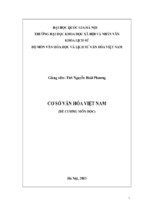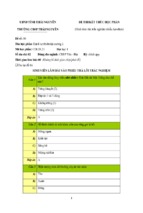Assessing the Library’s Influence on Freshman and Senior Level Outcomes with User Surveys | Stemmer | Evidence Based Library and Information Practice
HOME
ABOUT
SUBMISSIONS
LOGIN
REGISTER
SEARCH
CURRENT
ARCHIVES
ANNOUNCEMENTS
OPEN ACCESS
TWITTER
MOST READ ARTICLES
MOST CITED ARTICLES
OPEN JOURNAL SYSTEMS
Journal Help
Home >
Vol 10, No 2 (2015) > Stemmer
Article
Username
Assessing the Library’s Influence on Freshman and
Senior Level Outcomes with User Surveys
John K. Stemmer
Director of Library Services
Bellarmine University
Louisville, Kentucky, United
States of America
Email:
[email protected]
David M. Mahan
Executive Director of
Institutional Research and Assessment
Manhattan College
Riverdale, New York, United
States of America
Email:
[email protected]
Received: 14 Feb. 2015 Accepted:
30 Apr. 2015
2015 Stemmer and Mahan. This is an Open
Access article distributed under the terms of the Creative
Commons‐Attribution‐Noncommercial‐Share Alike License 4.0
International (http://creativecommons.org/licenses/by-nc-sa/4.0/),
which permits unrestricted use, distribution, and reproduction in any medium,
provided the original work is properly attributed, not
used for commercial
purposes, and, if transformed, the resulting work is redistributed under the
same or similar license to this one.
US ER
Abstract
Objectives
–
This study seeks to identify areas where relationships exist between a
student’s library usage and
student outcomes at Bellarmine University, a
private master’s level institution. The study has two primary aims.
The first
is to see if an operationally oriented user survey can be used to provide
evidence of the library’s support
for institutionally important student
outcomes. The second is to develop a regression model that provides a big
picture with multiple variables to determine if library factors are still
significant in student outcomes when
controlling for significant demographic
factors.
Methods
–
The library regularly conducts student user surveys, and this study examines
the results of the first
three surveys, from 2007, 2008 and 2010. These surveys
include individually identifiable data on why students
come to the library and
how often they use it in person and online. Researchers aggregated student
responses into
class-based cohorts and used regression analysis to analyze the
extent and significance of the relationships, if any,
that exist between
student use of the library and student outcomes such as retention, graduation
and cumulative
GPA. The study takes into consideration known significant
student demographic factors such as American Collect
Testing (ACT) composite
score, full- or part-time status, and their session GPA.
Results
–
The study identifies specific library services and resources that have
significant correlations with the
selected student learning measures and outcomes.
For freshman students, the ability to access the library online
influences both
retention and graduation. In looking at freshman learning outcomes represented
by GPA, the
results again indicate that the library has a positive influence on
a student’s GPA. The library’s influence appears
through two factors that
highlight the library as a place: providing a place to study alone and as a
place that has
specialized equipment available to students. The library
influences seniors’ cumulative GPA differently than for
freshmen, primarily
through the library’s role as an information resource. The variable check out
books had a
positive impact on senior’s GPA.
Conclusions
–
This study indicates that the library does have an influence on student
outcomes, whether learning
outcomes, represented by cumulative GPA, or more
typical student success outcomes, represented by second-year
retention and
graduation. This is true even when controlling for certain demographics,
including the student’s
ACT score, whether the student is part-time or
full-time, and their session GPA. The factors that influence an
https://ejournals.library.ualberta.ca/index.php/EBLIP/article/view/24157/18389[24-Nov-15 00:33:45]
Password
Remember me
Login
AR T I CL E T O O L S
Abstract
Print this article
Indexing metadata
How to cite item
Email this article (Login
required)
Email the author (Login
required)
Post a Comment (Login
required)
JOU RNAL CO NT ENT
Search
Search Scope
All
All
Search
Browse
By Issue
By Author
By Title
Other Journals
FO NT S I ZE
INFO RMAT I O N
For Readers
For Authors
For Librarians
CURRENT I S S UE
Assessing the Library’s Influence on Freshman and Senior Level Outcomes with User Surveys | Stemmer | Evidence Based Library and Information Practice
individual
student’s outcome change depending on the point in time in the undergraduate
experience. These
statistical analyses provide significant evidence for the value
the library provides in support of institutionally
important student outcome
goals.
Introduction
At Bellarmine University the administration is
creating a culture of assessment. As part of this effort, Bellarmine University
Library conducts user surveys of faculty or students as a matter of course,
starting in 2007. These surveys are a direct result
of the need to provide
assessment measures to outside stakeholders, in this case for the Southern
Association of Colleges
and Schools accreditation review. They are also used as
a focused supplement to benchmark studies that had already been
conducted. In many
ways this practice reflects the state of traditional library assessment, in
that it is generally input/output
oriented and, more recently, operationally
oriented. In both of these assessment efforts, benchmarks of inputs/outputs or
user satisfaction surveys, whether locally or nationally (e.g., LibQUAL), the
assessment has remained focused on the
library and its internal operations.
They do not provide particularly compelling evidence for other interested
parties.
The library’s satisfaction survey is used to gauge the
effectiveness of the library’s operations as seen by its users. Traditional
library assessment has little correlation with the outcomes and positive work
of the institution; rather it provides data that
indicates strengths and
weaknesses on the library’s part that the library administration can then take
efforts to further
develop or correct as the case may be. Operationally these
surveys can be helpful to a library administration; they provide
valuable data
that the library and its resources and services are being used and even
appreciated. However, they do not
demonstrate to institutional stakeholders the
impact of the library on institutional goals and objectives.
Increasingly, academic libraries are being asked to
provide data and assessments that demonstrate the library’s connection
with the
institution’s desired outcomes. They are facing increasing demands for
accountability to a broader audience than
ever before. Libraries have moved
from being the only information resource to being a quality information
resource. In the
current economic climate, parent institutions seek to save
every dollar they can and face difficult budget choices, often
including
decreased library budgets. Meanwhile, the political climate calls for increased
accountability and greater
connections between the university’s efforts and
student learning and student success. This is the changing environment
faced by
higher education institutions and therefore academic libraries.
In response, librarians are more frequently seeking to
identify areas where they can demonstrate a relationship exists
between a
student’s library interactions and student outcomes, in contexts relevant to a
wider audience at the university
and beyond. To accomplish this Oakleaf (2010)
indicates that the library must link its data to individual students.
Matthews
(2012) has likewise recently noted that success in efforts to link the library
and student outcomes will require the
use of individual student data. One of
the reasons that student unit data is such a constant issue in these efforts by
librarians is that generally libraries do not track what resources are used by
which students, or how students use library
resources and services. As a matter
of professional ethics, personally identifiable information is often deleted or
not even
collected to maintain an individual’s privacy. So while offices of
institutional research have access to large amounts of
individually
identifiable outcome data, most libraries do not.
The need for library assessment efforts that show the
influence of the library in terms of institutionally relevant outcomes,
such as
student learning and student success, is highlighted in the ACRL report The Value of Academic Libraries (Oakleaf,
2010). Much work and many attempts have been made to demonstrate the library’s
direct impact on student learning and
other student outcomes. Recent work
includes studies by Wong and her colleagues to examine the connections between
library material usage and student GPA (Wong & Webb, 2011), and library
instruction and graduating GPA (Wong &
Cmor, 2011). Emmons and Wilkinson
(2011) examine the library’s impact on student persistence. Tenopir (2012)
reports on
multiple methods being used to try and measure library value in her
status report on the lib-value project. More thought
and effort has been put
forth to developing appropriate assessment measures that address the library’s
impact on students,
particularly the impact on student outcomes and student
learning. Oakleaf (2011) addresses the challenges librarians face
in trying to
assess the library’s connection with student learning and outcomes. Rodriguez
(2011) reports on his efforts to
develop one such tool, the protocol for
Understanding Library Impacts, to show library impact on student learning, and
his
first results are promising (Rodriguez, 2012). In the UK, the Library
Impact Data Project has been examining the issue of
developing appropriate
measures to assess the library’s role in student learning and outcomes, finding
significant
correlation between library usage and student attainment of the
final degree (Stone, Pattern, & Ramsden).
Aims
This exploratory study seeks to identify areas where
relationships exist between a student’s library usage and relevant
student
outcomes at Bellarmine University. The two primary aims are to see if an
operationally oriented user survey can be
used to provide evidence of the
library’s role in institutionally important student outcomes, and to move
beyond the
simple, one to one, correlations and use a regression model that
provides a bigger picture with multiple variables to
determine if, when
significant demographic factors are controlled, library factors are still
significant in student outcomes.
Methods
Like many academic libraries, Bellarmine University
library uses a student user survey as part of its assessment efforts.
Between
2007 and 2010 it conducted three such surveys, and now does one every other
year. These surveys provide data
on why students come to the library and how
often they use the library. The library survey asked questions in two
groupings
(see Appendix A). The first grouping asks the reasons that students come to the
library, with a list of 18 possible
reasons with checkboxes. Respondents were
asked to check all reasons that applied. The second group of questions
requests
information on how often a student came to the library and how often the
student used the library online, with
https://ejournals.library.ualberta.ca/index.php/EBLIP/article/view/24157/18389[24-Nov-15 00:33:45]
Assessing the Library’s Influence on Freshman and Senior Level Outcomes with User Surveys | Stemmer | Evidence Based Library and Information Practice
response options ranging from daily to
never. Most importantly, the survey is not anonymous. The library can identify
how students report using the library at an individual level.
Researchers paired the library survey data with the
university’s Office of Institutional Research student data to first
determine
if there were any significant relationships between a student’s self-reported
library usage and known student
outcomes. They used a logistic regression of
all the library input variables against selected student outcomes: retention,
graduation, and GPA. They also determined that the data would be viewed in
undergraduate class-based cohorts to
minimize variations among the respondent
experiences. In addition to the library variables, researchers tested a number
of
demographic factors drawn from institutional research data against selected
student outcomes to identify the most
significant demographic factors for the
individual cohorts. Using these control factors and the library variables the
researchers developed three research questions:
1. Does
library usage influence whether a freshman student returns in his/her next
year of undergraduate study?
2. Does
library usage influence whether a freshman student graduates within four
or five years in undergraduate
study?
3. Does
library usage influence cumulative GPA for freshmen and seniors?
Undergraduate students participated in library surveys
in the years 2007, 2008 and 2010. Bellarmine University is a small,
private,
Catholic university located in Louisville, Kentucky. Total university
enrollment is approximately 2,000
undergraduate students and nearly 800 graduate
students. There were over 1,000 students living in the residence halls. The
institution currently offers over 50 undergraduate bachelor degree programs and
over 20 graduate programs. Over 80% of
Bellarmine’s undergraduate students
attend full-time and are under 25 years of age.
Bellarmine University has an incoming class of about
600 students every fall. The following demographic and academic
preparedness
measures are consistent across freshman cohorts:
24-25
ACT composite average
65%
from Kentucky, 35% out of state
40%
first-generation students (defined as neither parent earning a bachelor’s
degree)
20-30%
Pell Grant recipients
10-15%
students of colour
1%
international students
Due to these similar demographics across the student
body, researchers collapsed the survey responses for 2007, 2008, and
2010 and
studied the data as class-based cohorts.
Due to the limited number of undergraduate students at
the institution, sampling was unnecessary because the entire
population could
easily be requested to participate. On designated years, the institution
invited the undergraduate
populations to participate in the library survey.
Most members of the freshmen and senior populations start at the
university as
first-time, traditional age freshmen; however, all freshman and senior students
were invited to participate in
the survey, regardless of whether they enrolled
as traditional freshmen, transfer students, or re-admitted students. The
response
rate for the three surveys ranged from a low of 20% to a high of 26%.
Results
The variables considered, Full-time/Part-time Status, Session
GPA, Race, and ACT composite score, either singly or in
combinations,
were identified by a logistic regression as having a significant relationship
to outcome variables, whether a
student graduated or the cumulative GPA (p<.05). These variables were
controlled in our analyses to consider whether
library usage variables
independently influenced student outcomes (see Appendix B).
Analysis One: Second-year Retention of Freshman
Students
Does
library usage influence whether a freshman student returns in his/her next
year of undergraduate study?
Researchers conducted a forward entry logistic
regression using freshmen student data only (n=370), considering any
significant library variables related to outcome variable, retained in a
students’ second year. There were 336 freshmen
returning in the second year
(91%) and 34 students did not (9%). The omnibus test of model coefficients was
significant,
with a chi-square test result of 8.227 (p<.05). One library variable was determined to be a significant
positive predictor of
returning for the second year: Access library online (see Table 1). The Nagelkerke R-squared was
0.048.
Researchers conducted second
logistic regression in two steps. First, by identifying the control variables Full-time/Part-time
Status, ACT composite score,
and Session GPA, which were selected
because correlational analysis revealed significance
relationship to Return (p<.05). Second, they used a forward entry technique to consider library
variables after the control
variables. The omnibus test of model coefficients
was significant, with a resulting chi-square of 31.021 (df=3, p<.001). They
found that Session GPA significantly predicted Return. After the control variables were
entered, the library variable Access
library
online again significantly predicted whether a student returned in their
second year using the same forward entry
method (p<.05) (see Table 2). The Nagelkerke R-squared was 0.206.
Table 1
Significant Library
Variables Related to Retention
https://ejournals.library.ualberta.ca/index.php/EBLIP/article/view/24157/18389[24-Nov-15 00:33:45]
Assessing the Library’s Influence on Freshman and Senior Level Outcomes with User Surveys | Stemmer | Evidence Based Library and Information Practice
Measure
B
S.E.
Wald
Df
Sig.
Exp(B)
Access library online
.432
.158
7.504
1
.006
1.54
Constant
1.242 .388
10.236
1
.001
Table 2
Significant Control and
Library Variables Related to Retention
B
3.463
S.E.
Wald
Df
Sig.
Exp(B)
FT or PT
21.868
40192.7
.000
1
1
.000
ACT
.074
.067
1.238
1
.266
1.077
Session GPA
.998
.224
19.859
1
.000
2.712
Access library online
.311
.157
3.947
1
.047
1.365
Constant
18.721
40192.7
000
1
1
1.4E+08
Table 3
Significant library
variables related to graduation
B
S.E.
Wald
df
Sig.
Exp (B)
Access Library
.245
.117
4.411
1
.036
1.277
Online
Constant
.240
.335
.513
1
.474
1.271
Analysis Two: Graduation of Freshman Students from the
Same Institution
Does
library usage influence whether a freshman student graduates within four
or five years in undergraduate study?
Researchers conducted a forward entry logistic regression using freshmen student data only
(n=220, after combining
freshmen from surveys in 2007 and 2008), considering
any library variables related to outcome variable to identify any
significant
library variables related to graduation. This included respondents who graduated
within four years for 2008
freshman surveys or within five years for 2007
freshman surveys. Respondents were
predominantly traditional-aged
freshmen, and primarily full-time students.
There were 156 freshmen that graduated (71%) and 64 students did not (29%).
The
omnibus test of model coefficients was significant, with a resulting chi-square
of 4.584 (p<.05). Researchers
found that
one library variable, Access
library online (p<.05), was a
significant predictor of graduation It
was a positive predictor, and
confirmation of this was associated with students
graduating (see Table 3). The Nagelkerke R-squared was .029.
Researchers conducted a
second logistic regression in two steps. First using the following control
variables: Full-time/Parttime status,
ACT score, Session GPA, and Race,
which were selected because correlational analysis revealed significance
relationship to Graduate (p<.05).
Second, using a forward entry technique to consider library variables after
including the
demographic control variables. The omnibus test of model
coefficients was significant, with a chi-square result of 37.943
(p<.001). After entering the control
variables, the library variable Access library
online still significantly predicted whether a
student graduated, using the
forward entry method (p<.05) (see
Table 4). The Nagelkerke R-squared was 0.255.
Analysis Three: First-year Cumulative GPA
Does library usage influence cumulative GPA for
freshmen?
Researchers conducted an
analysis of freshman student data only (n=370), considering any significant
variables correlated
with the outcome variable Cumulative GPA. They employed a forward entry ordinary least
squares (OLS) regression to
consider what variables, if any, predict Cumulative GPA. Researchers identified
two significant library variables, Study
alone
and Use of printer or
photocopier, as positive predictors, for agreement with them was associated
with a higher Cumulative
GPA. The
adjusted R-squared was .030. Controlling for the significant non-library
variable, ACT Composite, entering it
in
the model before library survey items, the R-squared is .15 for the ACT
variable; however Study alone and Use of printer and
photocopier still
present themselves as significant factors for Cumulative GPA (see Tables 5 and 6).
Table 4
Significant
Control and Library Variables Related to Graduation
B
S.E.
Wald
df
Sig.
Exp(B)
FT or PT
22.999
40193.2
.000
1
1
9.74E+09
ACT
0.065
0.054
1.44
1
0.23
1.067
Session GPA
1.09
0.282
14.892
1
0
2.974
Race
0.954
0.437
4.766
1
0.029
2.595
https://ejournals.library.ualberta.ca/index.php/EBLIP/article/view/24157/18389[24-Nov-15 00:33:45]
Assessing the Library’s Influence on Freshman and Senior Level Outcomes with User Surveys | Stemmer | Evidence Based Library and Information Practice
Access library
online
Constant
0.262
0.131
3.986
1
0.046
1.299
-28.586
40193.2
.000
1
Table 5
Control
and Library Variables Related to First-year GPA
0.999
.000
Change Statistics
Model
R
R Square
Adjusted R
Square
Std. Error
of the
Estimate
ACT
ACT, study
alone
ACT, study
alone, use
printer or
photocopier
0.396
0.157
0.154
0.561
0.157
67.240
1
362
0.000
0.426
0.182
0.177
0.553
0.025
11.014
1
361
0.001
R Square
Change
F Change
df1
df2
Sig. F
Change
0.437
0.191
0.184
0.551
0.009
4.005
1
360
0.046
Additional library survey
items were not significant in the model, but had significant positive
correlation with students’
cumulative GPA at the end of the their freshman year
(p<.01):
·
Access library online
·
Use computer for academic
purposes
·
Consult a reference
librarian
Analysis Four: Senior Cumulative GPA
Does library usage influence cumulative GPA for
seniors?
Researchers conducted an
analysis of senior student data only (n=360), considering any significant
library variables
correlated with the outcome variable Cumulative GPA. Researchers
used a forward entry ordinary least squares (OLS)
regression to consider what
variables, if any, predict Cumulative GPA.
They identified two significant library predictors:
Check out books and Use of
group study rooms. Check out books
was a positive predictor, and confirmation of this was
associated with a higher
Cumulative GPA. Use of group study rooms was a negative predictor. The adjusted R-squared was
.045. When
the control variable ACT Composite is
entered in the model before library survey items, the R-squared is .275 for
the
ACT variable; however while Check out
books still presents as significant, Use
of group study room is no longer a
significant factor (See Tables 7 and 8).
Table 6
First-year GPA Model
Coefficients
Unstandardized
Coefficients
Standardized Coefficients
Model
B
Std. Error
(Constant)
1.443
0.218
ACT
0.071
0.009
(Constant)
1.243
0.223
Beta
t
Sig.
6.617
0.000
0.396
8.200
0.000
5.565
0.000
ACT
0.070
0.009
0.391
8.198
0.000
study alone
0.265
0.080
0.158
3.319
0.001
(Constant)
1.201
0.224
5.372
0.000
ACT
0.069
0.008
0.385
8.099
0.000
study alone
0.231
0.081
0.138
2.845
0.005
0.133
0.066
0.097
Table 7
Control and Library
Variables Related to Senior GPA
2.001
0.046
use printer or
photocopier
Change Statistics
Adjusted
Std.
Error of
R
https://ejournals.library.ualberta.ca/index.php/EBLIP/article/view/24157/18389[24-Nov-15 00:33:45]
Assessing the Library’s Influence on Freshman and Senior Level Outcomes with User Surveys | Stemmer | Evidence Based Library and Information Practice
Model
R
R
Square
R
Square
the
Estimate
Square F
Change Change
df1
df2
Sig. F
Change
ACT
0.525
0.275
0.273
0.353
0.275
104.147
1
274
0.000
ACT, check out books
0.540
0.292
0.287
Table 8
Senior
Year Cumulative GPA Model Coefficients
0.350
0.016
6.333
1
273
0.012
Model
Unstandardized
Coefficients
Std.
B
Error
(Constant)
1.780
0.155
ACT
0.063
0.006
(Constant)
1.743
0.155
ACT
0.062
0.006
Standardized
Coefficients
Beta
0.525
0.513
t
Sig.
11.456
0.000
10.205
0.000
11.276
0.000
10.029
0.000
Check out books
0.111
0.044
0.129
2.516
0.012
Discussion
The analysis indicates that
student usage of the library manifests itself in a number of ways, including
use as an academic
or information resource, use as an information service, as a
place to study alone or in a group, a place to use equipment
available in the
library, and for social reasons. Many of these have previously appeared in the
library literature as
recognizable parts of a library’s offerings to the
university community. The results illustrate that library factors consistently
show a significant relationship to student outcome variables, even when control
factors are considered.
The study’s findings confirm
other studies that link the use of library services and resources to a
student’s learning and
success outcomes. Wong and Webb (2011) identified a
single aspect of library usage (checking out books) that correlates
with a
student outcome (GPA). For seniors, checking out books was a significant
predictor in the model for their GPA.
Emmons and Wilkinson (2011) identify that
the ratio of professional staff to full-time students has an impact on student
persistence. This study also found that the library has an influence on
freshman retention and graduation, through the use
of online resources.
In examining the library’s
influence on student success outcomes of second-year retention and graduation,
this study
indicates that the library’s support does favourably influence
student success. In looking at second-year retention of
freshmen, accessing the
library online was identified as the most significant library factor and even
after controlling for
significant demographic variables, this factor was still
identified by the model as significant influence on retention. For
freshman
students the same factor influenced both retention and graduation: the
availability of online access to the library.
Freshman students that accessed
the library online more frequently were more likely to return for their second
year and to
graduate. Using the library’s academic information resources
appears to favourably influence a freshman’s student success
outcomes.
In looking at student learning outcomes represented by GPA, the results again indicate that the library does have a
consistent and positive influence on a student’s GPA, though specific library factors change depending on where in their
academic career the
student is located. For first-year students the library’s influence appears
through two variables that
highlight the library as a place: providing a place
to study alone and as a place that has specialized equipment available to
students. In a sense, as new students they are getting acclimated to the place
of the library in their academic efforts.
Interestingly, the impact of studying
alone repeats a finding by Arum and Roska (2011) showing that time spent
studying
alone is more academically beneficial than time spent studying in
groups. Seniors cumulative GPA was influenced by the
library differently than
first-year students. Checking out books
had a positive impact on senior’s GPA. Interestingly Using
group study rooms, which had a negative effect when
considering the library variables alone, was not significant when
control
variables were entered. The consistent presentation of library variables after
the use of significant control variables
shows that library factors do have
significant connections to student outcomes and success.
Limitations
Researchers employed a
number of different non-library control variables in this study, but there are
many that were not
considered. The researchers wanted a “bigger picture” view
of the library’s relationship with student outcomes more than
a one-to-one
correlation, but this is not intended to imply causation. It should be noted
that this study relies on selfreported data, the value of which has recently
been challenged (Porter, 2011). It is also worth noting that this study focuses
on acquiring factual information on specific activities of the students. This
study does not seek information on students’
perception of ability or growth
over time, merely what students were doing the year the survey was taken. It
was designed
within the parameters outlined by Gonyea (2005) as an appropriate
means of creating and using self-reported data.
Conclusion
https://ejournals.library.ualberta.ca/index.php/EBLIP/article/view/24157/18389[24-Nov-15 00:33:45]
Assessing the Library’s Influence on Freshman and Senior Level Outcomes with User Surveys | Stemmer | Evidence Based Library and Information Practice
Not surprisingly, not all
correlations identifying the library’s influence on student outcomes were found
to be significant
when using regression analysis to further examine the
relationship in conjunction with non-library control variables. The
study
confirms previous correlation studies that identify the library as contributing
to student outcomes, and indicates that
the library’s relationship with student
outcomes is not eliminated by control variables. The library has an influence
on firstyear and senior student outcomes but does not affect them in the same
manner. The study indicates that the library
provides support for students in a
number of ways: as a resource, through services, and as a place. All of these
aspects of
the library’s operations are shown to be influential on student
outcomes, but no single aspect is consistent from year to
year as an individual
students progress through their studies. Rather, as individual students develop
they seem to rely on
different aspects of the library offerings and their use
of the library in order to succeed.
This study indicates that
the library does have an influence on freshman and senior level outcomes,
whether expressed as
learning outcomes represented by cumulative GPA, or more
typical student success outcomes, such as retention and
graduation rates. This
is true even when controlling for certain demographic characteristics,
including the student’s ACT
score, whether the student is part-time or
full-time, and their session GPA. The factors that impact a student’s outcomes
changes depending on where in their academic career a student is located. These
statistical analyses provide significant
evidence for the value provided by the
library in support of institutionally important student outcome goals.
Additional
study into what students identify as different library factors over
time would be useful. Another area for further research
would be to consider if
there are any differences in library usage factors based on the student’s field
of study.
References
Arum, R., & Roksa, J. (2011). Academically adrift: Limited learning on
college campuses. Chicago, Ill: University of Chicago
Press.
Emmons, M., & Wilkinson, F. C. (2011). The
academic library impact on student persistence. College & Research Libraries,
72(2), 128-149. http://dx.doi.org/10.5860/crl-74r1
Gonyea, R. M. (2005). Self-reported data in
institutional research: Review and recommendations. New Directions for
Institutional Research, 2005(127), 73-89. http://dx.doi.org/10.1002/ir.156
Matthews, J. R. (2012). Assessing library
contributions to university outcomes: The need for individual student level
data.
Library Management, 33(6/7),
389-402. http://dx.doi.org/10.1108/01435121211266203
Oakleaf, M. (2010). The value of academic libraries: A comprehensive research review and
report. Chicago, IL: Association of
College and Research Libraries.
Oakleaf, M. (2011). Demonstrating the value of
the library: Assessment tools & techniques. Paper presented at the American
Library Association annual conference New Orleans, LA. http://meganoakleaf.info/ala2011valuepanel.pdf
Porter, S. R. (2011). Do college student
surveys have any validity? Review of
Higher Education, 35(1), 45-76. doi:
http://dx.doi.org/10.1353/rhe.2011.0034
Rodriguez, D. (2011). Understanding library
impacts on student learning. In the Library with the Lead Pipe. Retrieved
from:
http://www.inthelibrarywiththeleadpipe.org/2011/understanding-library-impacts-on-student-learning/
Rodriguez, D. (2012). Answering questions
about library impact on student learning. In the Library with the Lead Pipe.
Retrieved from: http://www.inthelibrarywiththeleadpipe.org/2012/answering-questions-about-library-impact-onstudent-learning/
Stone, G., Pattern, D., & Ramsden, B.
(2011). Does library use affect student attainment? A preliminary report on the
library
impact data project. LIBER
Quarterly, 21(1), 5-22. doi: http://liber.library.uu.nl/index.php/lq/index
Tenopir, C. (2012). The lib-value project:
Status report. Paper presented at the American Library Association annual
conference, Anaheim, CA.
http://libvalue.cci.utk.edu/sites/default/files/ARL%20ALATenopir20126%2022%20REV%20Final.pdf
Wong, S. H. R., & Cmor, D. (2011).
Measuring association between library instruction and graduation GPA. College
&
Research Libraries, 72(5), 464-473. doi: http://dx.doi.org/10.5860/crl-151
Wong, S. H. R., & Webb, T. D. (2011).
Uncovering meaningful correlation between student academic performance and
library material usage. College &
Research Libraries, 72(4), 361-370. http://dx.doi.org/10.5860/crl-129
Appendix A
2010 Library Usage Survey
Reasons you come to the library (check all that
apply):
To check out books
To check out media (CDs, DVDs, etc.)
To locate journal/newspaper articles
https://ejournals.library.ualberta.ca/index.php/EBLIP/article/view/24157/18389[24-Nov-15 00:33:45]
Assessing the Library’s Influence on Freshman and Senior Level Outcomes with User Surveys | Stemmer | Evidence Based Library and Information Practice
To get help with research papers or other
course assignments
To read newspapers or current magazines
To use items (books/articles/videos) placed
on reserve by your professor
To use media equipment (e.g. video cameras,
digital cameras, scanners, video editing, video viewing)
To study alone
To study with a group
To use the group study rooms
To use a printer or photocopier
To use the computers for academic purposes
To use the computers for recreational/personal
use
To use the Mac lab (Apple Macintosh
Computers)
To visit the Help Desk
To visit the Academic Resource Center (ARC)
To visit the Merton Center
To use a laptop
To meet friends
To look for information in online databases
(EBSCOhost, ProQuest etc.)
Other (please specify)
If you never use the
library, why don't you?
Please rate the following:
On average, how often
2 to 4 times a
2 to 3 times a Once a month
do
you use the library Daily
Once a week
Never
week
month
or less
in person?
On average, how often
do
you access library
materials, services and
2 to 4 times a
2 to 3 times a Once a month
databases (such as
Daily
Once a week
Never
week
month
or less
ProQuest and
EBSCOhost) without
visiting the library?
Appendix B
Variables considered
Demographic and Academic
Preparedness
ACT Composite (max. 36)
1st Generation College Student (Y/N)
Session Grade Point Average (GPA)
Pell recipient (Y/N)
Athlete (Y/N)
Race (white, black, Hispanic, Pacific
Islander/Native Hawaiian, Asian, American Indian/Alaska Native,
Multi-race,
Unknown)
Sex (F, M)
High School Type (public or private)
https://ejournals.library.ualberta.ca/index.php/EBLIP/article/view/24157/18389[24-Nov-15 00:33:45]
Assessing the Library’s Influence on Freshman and Senior Level Outcomes with User Surveys | Stemmer | Evidence Based Library and Information Practice
Radius (miles from home)
Full-time or Part-time Student
Library Usage Variables
Check out books
Locate articles
Read newspapers or magazines
Use items on reserve
Study alone
Study with a group
Use the group study rooms
Use printer or photocopier
Use computers for academic purposes
Visit the Help Desk
Visit the Academic Resource Center (ARC)
Visit the Merton Center
Use a laptop
Use the computers for personal use
Meet friends
Use library at all
Use library in person
Access library online
Outcome Variables
Graduated in four or five years (Y/N)
Returned in the second year (Y/N)
Cumulative GPA in freshman year (0-4.0)
Cumulative GPA in senior year (0-4.0)
Evidence Based Library and Information Practice (EBLIP) | EBLIP on Twitter
https://ejournals.library.ualberta.ca/index.php/EBLIP/article/view/24157/18389[24-Nov-15 00:33:45]


